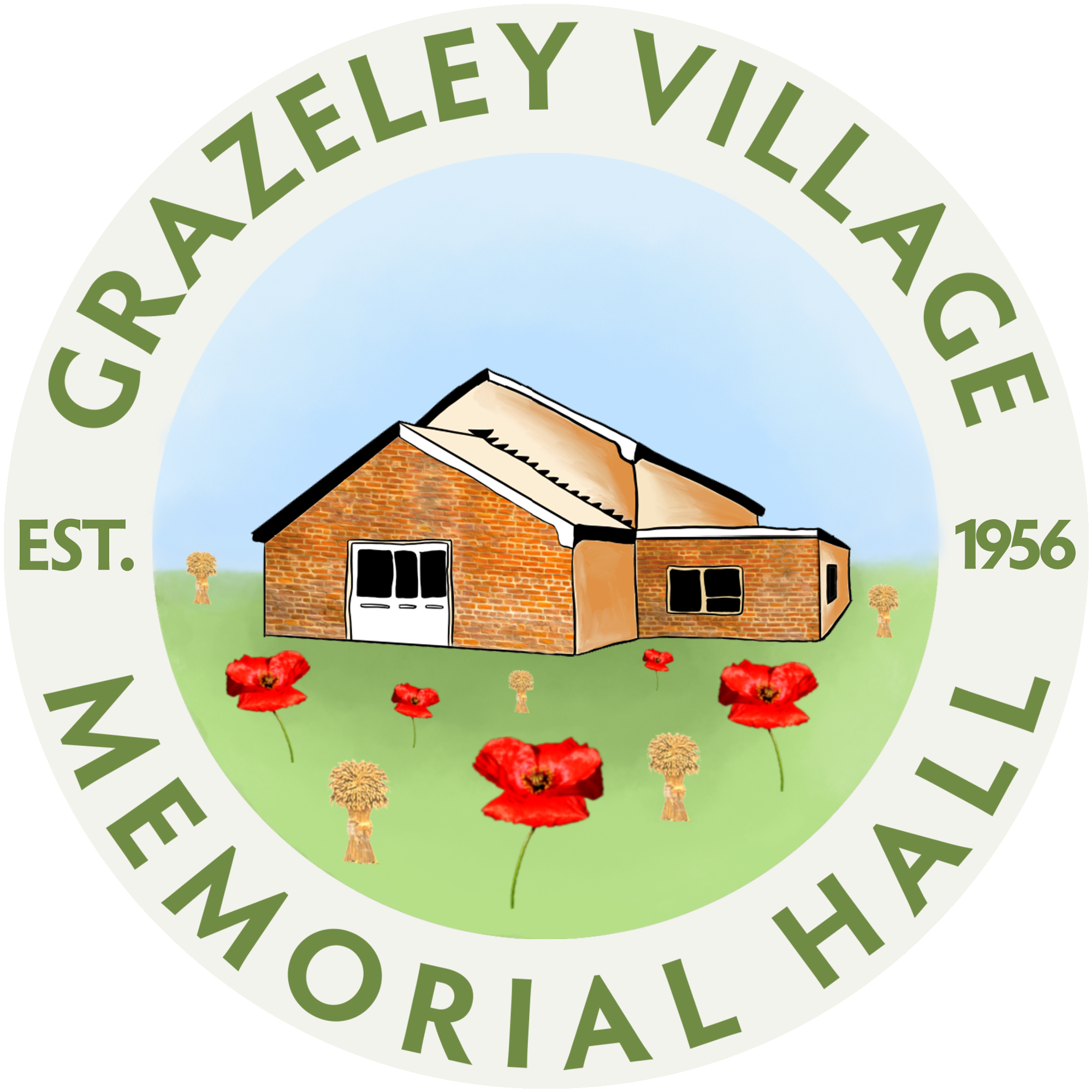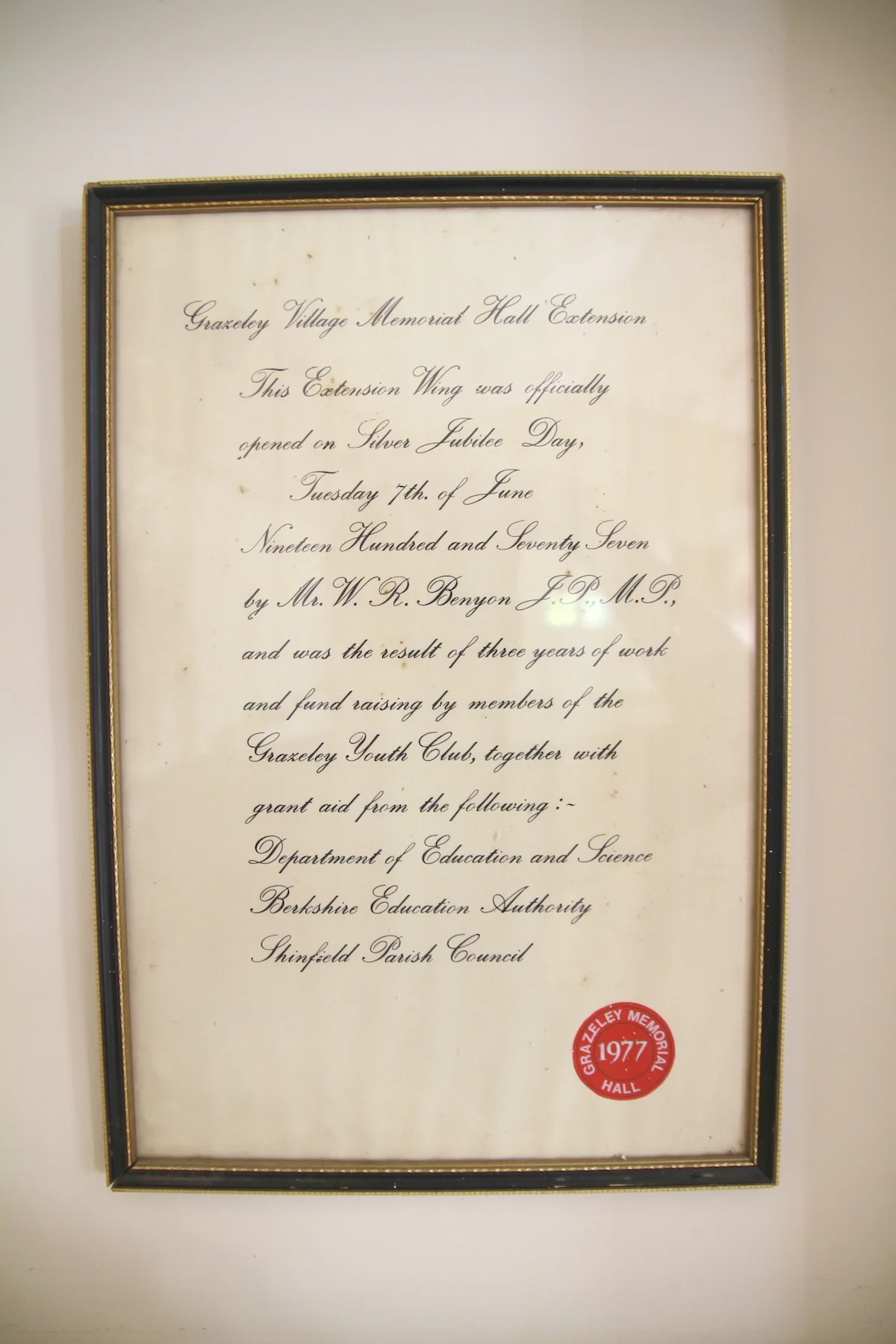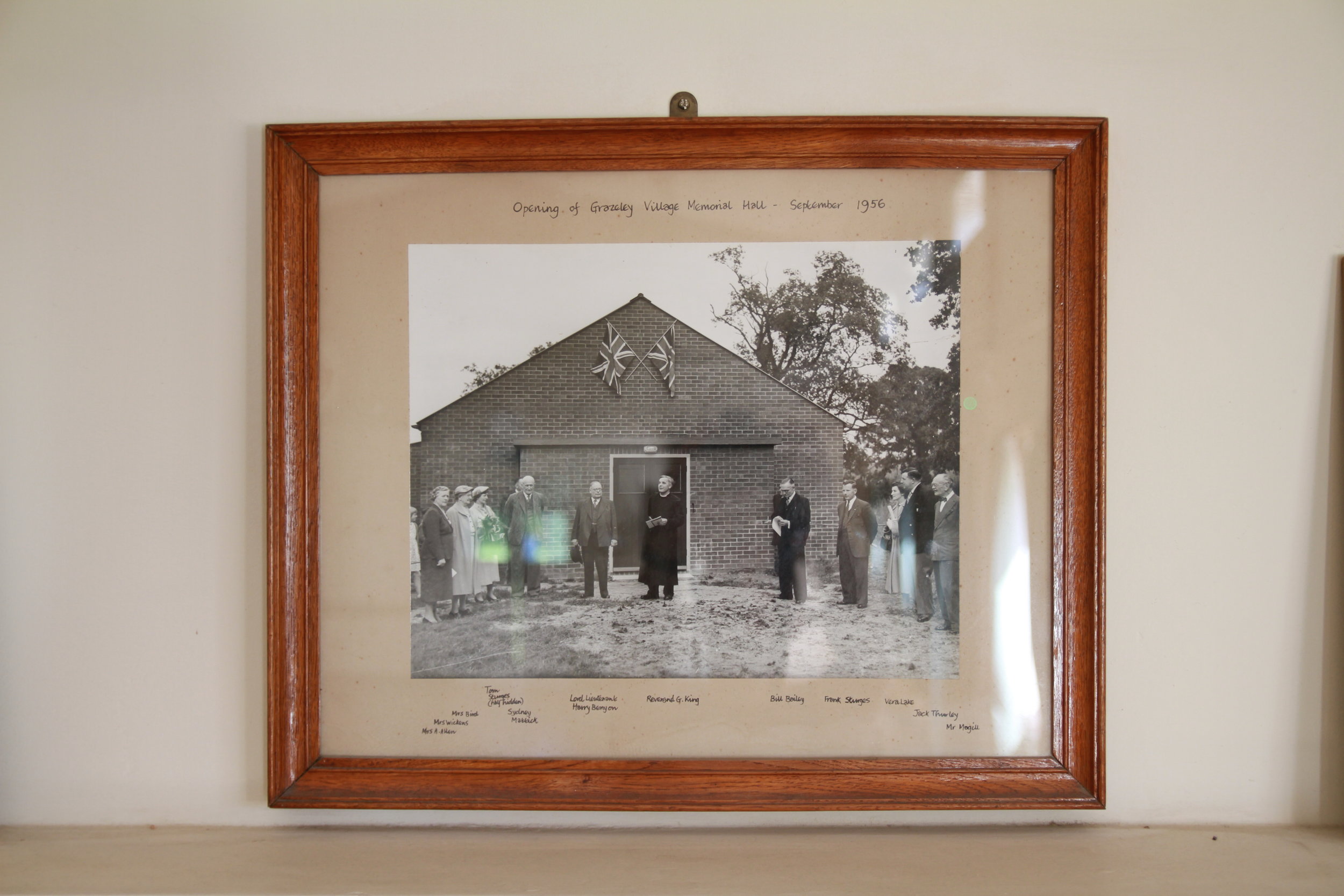The History of Grazeley Village Memorial Hall
The Grazeley Village Memorial Hall Charitable Trust was formed on 30th June 1949 as a gift of land to the parish by Francis Bullingham of Hartley Court Farm, James Hayes of Great Lee Farm and Sidney Mattick of Didenham Manor Farm.
The trust land was conveyed for the purposes of a village hall and recreation centre for the village of Grazeley. The hall was to be built for the “purposes of physical and mental training and recreation and social moral and intellectual development through the medium of reading, lectures, classes, recreations and entertainments or otherwise as may be found expedient for the benefit of the inhabitants of the civil parish of Grazeley…”
The trust was then formally registered with the Charity Commissioners for England and Wales, and a management committee was established to oversee the running of the trust.
The original single-story building was formally opened in 1956 by the Reverend G King and Lord Lieutenant Harry Benyon. The memorial hall, normally known simply as Grazeley Village Hall, was built on the village green, adjacent to the school and the church and provided a venue for the local community, clubs and societies. The new building replaced a wooden hut situated in the Old Vicarage grounds that was previously used by the village as a hall.
An extension wing was opened on the Queen’s silver jubilee day of 7th June 1977 following three years of work and fund raising by members of the Grazeley Youth Club and grants from the Department of education and Science, Berkshire Education Authority and Shinfield Parish Council. The extension added a meeting room, kitchen and toilets.
The hall underwent extensive rebuilding in 1985 and was reopened on 2nd November 1985 boasting a two-storey roof with much-increased interior ceiling height that allowed a full-size badminton court to be created, along with new front and rear entrance porches.
The hall was further refurbished in 2006 when it celebrated its Golden Jubilee with numerous events including a fun run and a summer ball.
In 2018 an extensive refurbishment programme began with the objective of modernising the hall and facilities to the benefit of all users. A significant boost to this programme was given in 2019 when a substantial grant was received from the Shinfield Parish Council.
The day-to-day running and oversight of hall continues to be managed by a dedicated Management Committee who voluntarily give up their time to meet regularly to ensure the building and grounds continue to provide high-quality facilities that benefit the village and surrounding area.
The History of Grazeley Village
The Grazeley village name first appears around 1598 and is derived from the Anglo-Saxon word “Griesley” meaning grazing land (meadow). It has also been known by the names of Greyshall, Greasull, Greyshull, Gresley and Graseley. Around the late 19th century, it was also referred to as Lambwood Hill.
Nestled amongst the farmers fields near to the Fowdry brook, village life centred around the Holy Trinity Church and the Wheatsheaf Public house.
Holy Trinity was built in the 14th century style and opened in 1850 as a gift from the Bishop of Oxford. Built in flint and stone, it consists of a chancel, nave, south porch and belfry with a single bell.
Inside the Church an oak tablet on the north wall remembered the local men who lost their lives during the two World Wars, with the inscription:
Ye that live on ‘mid English Pastures Green,
Remember us, and think what might have been.
Holy Trinity held its last service and closed its doors in January 2006 after 156 years of serving the community and the oak memorial tablet was relocated into the Grazeley Village Memorial Hall where it remains today and is used as a focal point on Remembrance Day each year.
The Wheatsheaf was the village pub which maintained its character as a rural pub and was never part of a pub chain. The original grade II listed building dated from the 17th century with a more modern extension added in the 19th century. The Wheatsheaf closed in 2006
Grazeley Parochial Primary School was built in 1861 at a cost of £442 16s 9d, initially to accommodate 100 pupils. As children walked from nearby Spencers Wood, Shinfield and Burghfield, two extensions to the school in 1893 and 1913 increased capacity to 150. The Merry's Educational Foundation established by deed in 1862, then proved by will in 1873, provided £20 a year in accordance with the donor's will to provide clothing for poor children – ten boys and ten girls attending the school.
Built into the school was the Merry's Trust Cottage where the District Nurse lived rent free with heating and maintenance costs being partly covered by dedicated savings left in the bank for this purpose. After years of disuse, the cottage was refurbished in 1996 for use by the school for administrative and child resource areas.
Originally an all-age school it became a primary school in 1944 and now teaches around 90 pupils aged between five and eleven.











